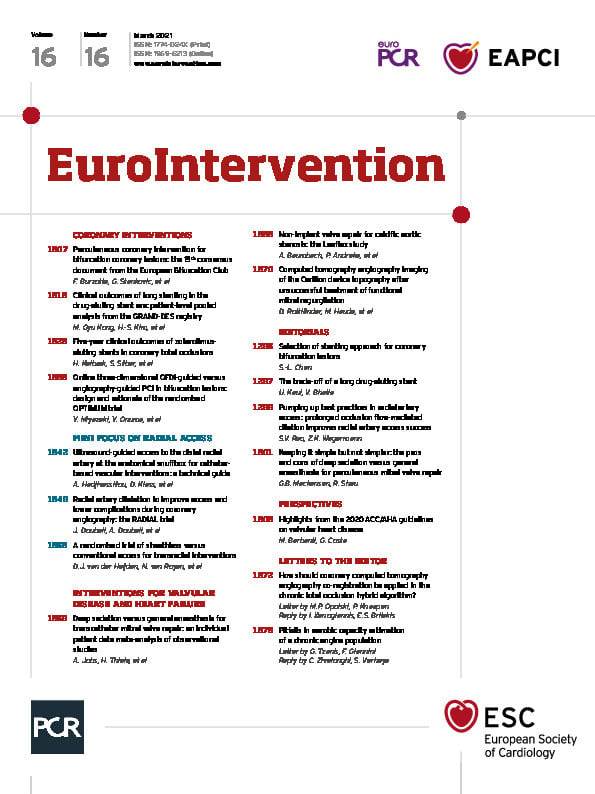
We are grateful for the insightful comments of Drs Opolski and Knaapen1. While we agree that there are multiple limitations of the existing CTA co-registration system, we would like to highlight the following:
1. “Intra-CTO wire advancement” refers to advancement within the vessel architecture (either intraplaque or subintimally) and not necessarily intraplaque. Intraplaque wire advancement cannot currently be ascertained using CTA co-registration due to low spatial resolution and limitations of the co-registered images. CTA co-registration can, however, help to determine whether the guidewire is advancing in the expected vessel course or whether it has entered a side branch or a coronary bypass graft.
2. The precision of co-registration is indeed low due to inaccuracies in centreline positioning and motion artefacts. In our practice, we rotate between the co-registered and non-co-registered images continually throughout the case to facilitate visualisation of the CTO PCI equipment and the coronary tree. Projecting the co-registered images in another monitor is an excellent solution to prevent a “crowded” fluoroscopy screen!
3. We agree that coronary CTA is an outstanding modality for clarifying proximal cap ambiguity and the presence and extent of calcification within and proximal or distal to the occlusion that can facilitate re-entry. The Asia Pacific Chronic Total Occlusion Club suggests that preprocedural coronary CTA should be considered in cases with a high J-CTO score, previous coronary artery bypass grafting, and previous failure2.
4. In our study, ADR was used in 52% (14/27) of the cases, which is higher than the 28% utilisation in a recent publication from the PROGRESS-CTO registry3,4. CTA co-registration with real-time fluoroscopy assisted with resolution of proximal cap ambiguity in 9 cases, guided intra-CTO wire advancement in 7 cases and facilitated re-entry in 2 cases. In the present study, ADR led to successful lesion crossing in 71% (10/14) of the cases in which it was used, whereas, according to prior data derived from the PROGRESS-CTO registry, ADR achieved successful lesion crossing in 60% (269/451) of the cases where it was applied5. The J-CTO score was higher in patients with CTA co-registration with real-time fluoroscopy-guided ADR in comparison with our prior data on angiography-only-guided ADR (3.5±0.8 vs 2.8±1.2, respectively), suggesting that CTA co-registration with real-time fluoroscopy may improve the success of ADR.
Coronary CTA has been shown to improve prediction of the outcomes of CTO PCI compared with the use of angiographic parameters and can facilitate procedural planning6. CTO co-registration is still in the early stages of development but carries great promise for further improving what can be achieved in these often complex and challenging procedures.
Conflict of interest statement
E. Brilakis has received consulting/speaker honoraria from Abbott Vascular, American Heart Association (associate editor Circulation), Amgen, Biotronik, Boston Scientific, Cardiovascular Innovations Foundation (Board of Directors), ControlRad, CSI, Ebix, Elsevier, GE Healthcare, InfraRedx, Medtronic, Siemens, and Teleflex; research support from Regeneron and Siemens; is the owner of Hippocrates LLC and a shareholder of MHI Ventures. I. Xenogiannis has no conflicts of interest to declare.
Supplementary data
To read the full content of this article, please download the PDF.

